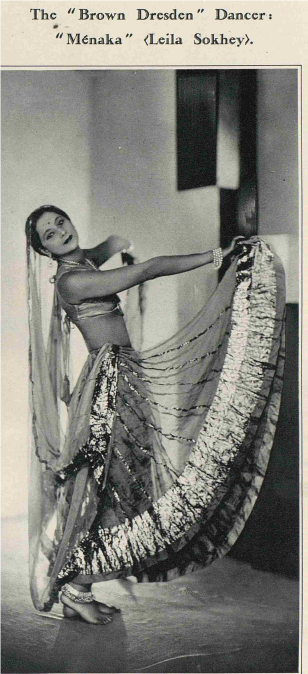
The „Brown Dresden“ Dancer
A week after Menaka’s performance at the luxury hotel The Dorchester, in London, journal The Sketch featured a portrait of the “first high cast Indian lady to appear as a dancer.” The reporter compared Menaka’s grace and delicacy to porcelain, more specific “a piece of pale brown Dresden china.” According to the newspaper there were numerous members of the Round Table Conference in the audience. In the Round Table Conference (RTC) Indian political, social and business leaders discussed the position of India within the British Empire. The RTC sat in three sessions in 1930, 1931 and 1932 – Menaka performed a week before the closure of the second meeting.
One of the delegates was Bhimrao Ramji Ambedkar (1891-1956), lawyer, professor of economics and preeminent advocate for the equality of Dalits, or untouchables. All delegates to the RTC were nominated by the Imperial Government. For the second RTC one exception was made: Mohandas Karamchand Gandhi (1869-1948) was the sole representative of the Indian National Congress (INC). A year earlier Gandhi had gained worldwide admiration and staunch criticism with his Salt March (March-April 1930). The Salt Satyagraha started as a march of eighty men and grew into a mass movement against the British taxation of salt.
According to historian Ramachandra Guha the RTC was a political failure, but a personal success for Gandhi: he was warmly received during his visits to labourers, universities and the British public en large. Given his custom to pray every evening in his lodging, it seems rather unlikely the Mahatma attended Menaka’s performance. Moreover, The Sketch would certainly have mentioned it in the report.
However, Gandhi’s close associate Sarojini Naidu gave a lecture at the recital. Naidu had continued the salt campaign after Gandhi’s imprisonment and was present at the RTC as a representative of the Women’s India Association (WIA). Among the dances that Menaka performed were -in the words of The Sketch- the Dance of Shiva, the Birth of Lakshmi, Carnival and Serenade. The reporter concluded: “All her number were essentially national and appealed strongly to the members of the Round-Table conference who were in the audience.”
Sources:
The Sketch, 25 November 1931.
Ramachandra Guha, Gandh. The years that changed the world 1914-1948. (Albert A. Knopf New York 2018) pp. 401-423.